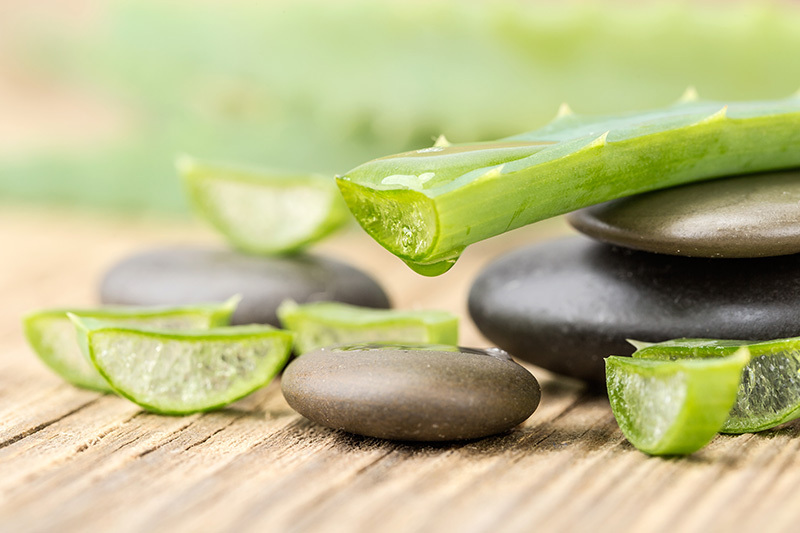Orchid Care Guide: A Cultivation Companion
Posted on 18/08/2025
Orchid Care Guide: A Cultivation Companion
Orchids have charmed gardeners for centuries with their exotic beauty, intricate blooms, and remarkable variety. However, many orchid enthusiasts hesitate to start cultivating these plants due to the myth that they require mysterious, complicated care. In reality, with the right knowledge and approach, anyone can succeed at orchid cultivation. This comprehensive Orchid Care Guide is your detailed resource and reliable companion on the journey to healthy, blooming orchids in your home or garden. Read on to discover everything you need to nurture vibrant, thriving orchids, from beginners' tips to expert insights!
Understanding Orchids: An Exotic Family of Plants
The Orchidaceae family is one of the most diverse plant groups on the planet, boasting over 25,000 species and tens of thousands of hybrids. Orchids can be found thriving in almost every habitat, from the humid undergrowth of tropical rainforests to arid mountaintops.
Popular Types of Orchids for Home Growers
- Phalaenopsis (Moth Orchid) - Well-known for its long-lasting blooms and ease of care.
- Cattleya - Renowned for fragrant, ruffled flowers, often used in corsages.
- Dendrobium - Hardy and diverse, popular for their spectacular flower spikes.
- Oncidium (Dancing Lady) - Noted for prolific sprays of small, cheerful blossoms.
- Vanda - Loved for their vibrant color and striking form.
Understanding which orchid variety you have is vital because proper care is often species-specific. Some orchids, for example, are epiphytes (air plants), while others are terrestrial, growing in soil.

Key Growing Conditions for Orchids
1. Light
Light is arguably the most important factor in orchid cultivation. Most orchids require bright, indirect sunlight.
- Phalaenopsis orchids prefer an east or west-facing window with filtered light.
- Cattleya and Vanda need more intense light and can tolerate some direct sun.
- If your orchids grow indoors, consider supplementing with fluorescent or LED grow lights.
Leaves tell a story: yellow or reddish leaves may indicate too much sun, while dark green leaves can signal insufficient light.
2. Temperature
Most orchid species thrive in temperatures between 65?F to 75?F (18?C to 24?C) during the day and a slight drop at night. This temperature variation is crucial, especially for inducing blooms.
- Phalaenopsis prefer a minimum nighttime temperature of 60?F (15?C).
- Cattleya and Dendrobium tolerate cooler nights, down to 55?F (13?C).
3. Humidity
Orchids flourish in 40-70% humidity.
- Use a humidity tray with pebbles and water under orchid pots.
- Group plants together to create a humid microclimate.
- Mist plants in the morning to mimic their natural environment.
Always provide good air circulation, as stagnant air promotes disease.
4. Watering
Overwatering is the most common cause of orchid failure. Here's what you need to know:
- Water once a week in winter, and twice in summer.
- Let the potting mix dry slightly between waterings.
- Use room-temperature, distilled, or rainwater when possible.
- Never let orchids sit in standing water.
As a rule of thumb: It's better to underwater than overwater your orchid.
5. Potting and Growing Media
Unlike most houseplants, many orchids don't grow well in standard potting soil. Instead, use an orchid-specific potting mix composed of:
- Bark chips
- Sphagnum moss
- Coconut husk
- Perlite
- Charcoal
Each species may prefer a slightly different mix. Repot orchids every 1-2 years after flowering or when the media breaks down.
Orchid Fertilization: Feeding for Success
Orchids are not heavy feeders, but they do benefit from regular, carefully measured nutrition. The general rule is: "Feed weakly, weekly."
- Use a balanced (20-20-20) orchid fertilizer.
- Dilute to half or quarter strength.
- Fertilize every other watering during active growth.
- Reduce feeding in cooler, dormant months.
Flush the potting media once a month with plain water to prevent salt buildup, which can harm sensitive orchid roots.
Repotting and Dividing Orchids
Repotting is essential for healthy orchid care. Signs it's time to repot include:
- Packing or breakdown of potting mix
- Roots growing over the edge of the pot
- Reduced flowering or weak growth
Step-by-Step Guide to Repotting Your Orchid
- Remove the orchid gently from its pot. Tap and squeeze the sides if needed.
- Trim away dead roots with sterilized scissors.
- Sterilize or wash the pot, or use a new container.
- Place a layer of fresh, damp orchid mix at the bottom.
- Position the orchid's roots and fill in around them, tapping the pot to settle the media.
- Water thoroughly and let drain.
Repot just after flowering for best results. Orchids can also be divided at this time to propagate new plants.
Blooming: Maximizing Orchid Flowers
The thrill of orchid cultivation comes when your plant bursts into spectacular bloom. To encourage reliable flowering:
- Provide adequate but not excessive light.
- Ensure a slight temperature drop at night.
- Maintain high humidity and airflow.
- Feed and water judiciously, especially in the growth season.
- Allow short dry spells for some species to mimic dry seasons.
After blooming, cut back the spent spike (for Phalaenopsis, cut to a node to possibly rebloom). Let the plant rest and gradually resume regular care.
Identifying and Resolving Common Orchid Problems
Pests
Common orchid pests include:
- Aphids - Sticky residue or distorted new growth.
- Mealybugs - Cottony clumps on stems or leaves.
- Spider mites - Fine webbing and stippled leaves.
- Scale insects - Hard, brown bumps on leaves.
Control measures: Remove with tweezers or isopropyl alcohol, rinse leaves, and ensure proper humidity and air circulation.
Diseases
Orchids are relatively resilient, but poor conditions can encourage disease. Major disease problems include:
- Fungal rot - Dark, mushy patches on roots or leaves.
- Bacterial infections - Soft, mushy, and foul-smelling spots.
To prevent and treat:
- Keep foliage dry, especially overnight.
- Water early in the day.
- Remove and discard affected plant parts.
- Sterilize tools.
Seasonal Orchid Care Tips
Adjust your orchid care routine throughout the year:
- Spring & Summer: More water and fertilizer as growth accelerates.
- Autumn: Reduce feeding, prepare for resting phase.
- Winter: Water sparingly; provide extra humidity with trays or humidifiers as heat dries the air.
Orchid Care: Frequently Asked Questions
How long do orchid blooms last?
Moth orchids (Phalaenopsis) can bloom for up to three months, while other types may offer flowers for a few weeks. With skillful care, many orchids will rebloom each year, or even more often!
Why are my orchid's leaves turning yellow?
This can be a sign of overwatering, underwatering, or aging leaves. Assess root health, adjust watering, and ensure the plant gets proper light.
Can I grow orchids outdoors?
Yes, but only in mild climates without severe frost. Many growers move orchids outdoors for summer, ensuring they stay shaded and protected from heavy rain. Always gradually acclimate them to new conditions.
Do orchids need to be in clear pots?
Clear pots help monitor root health and moisture but are not strictly required. Many species benefit from light reaching their roots.
Orchid Display and Creative Inspiration
Orchids bring unique elegance to every space. Showcase your plants by:
- Grouping different types together for abundant color.
- Suspending Vanda or Brassavola orchids in hanging baskets.
- Placing compact orchids in terrariums or glass cloches.
- Using decorative pots that allow drainage and airflow.
Take inspiration from public gardens and world-famous orchid shows to create your own display at home.

Orchid Propagation: Growing Your Collection
Expanding your orchid collection is straightforward once you master basic care. Common propagation techniques include:
- Division - Splitting mature plants (suitable for sympodial orchids like Cattleya and Dendrobium).
- Keiki growth - Some orchids naturally produce baby plants (keikis) along the flower spike.
- Seed propagation - Technically possible but very complex, requiring sterile lab conditions.
Always use sterilized tools and high-quality potting material when propagating to avoid disease.
Conclusion: Thriving with Your Orchids
Orchid care becomes a joyful, rewarding experience when you understand the fundamental needs of these spectacular plants. With attention to light, water, humidity, feeding, and repotting, your orchids will flourish, offering years of breathtaking blooms and unique natural beauty. Whether you're a curious beginner or a seasoned collector, let this Orchid Care Guide: A Cultivation Companion be your source of inspiration, support, and wisdom for growing lush, healthy orchids in any setting. Unlock the secrets of orchid success, and watch your floral dreams blossom!
Related resources:
Latest Posts
Greening Your Workspace: Low Maintenance Plants Edition
Your Birth Flower: A Reflection of Your Unique Traits
Ensuring the Longevity of Your Bouquet of Cut Flowers





